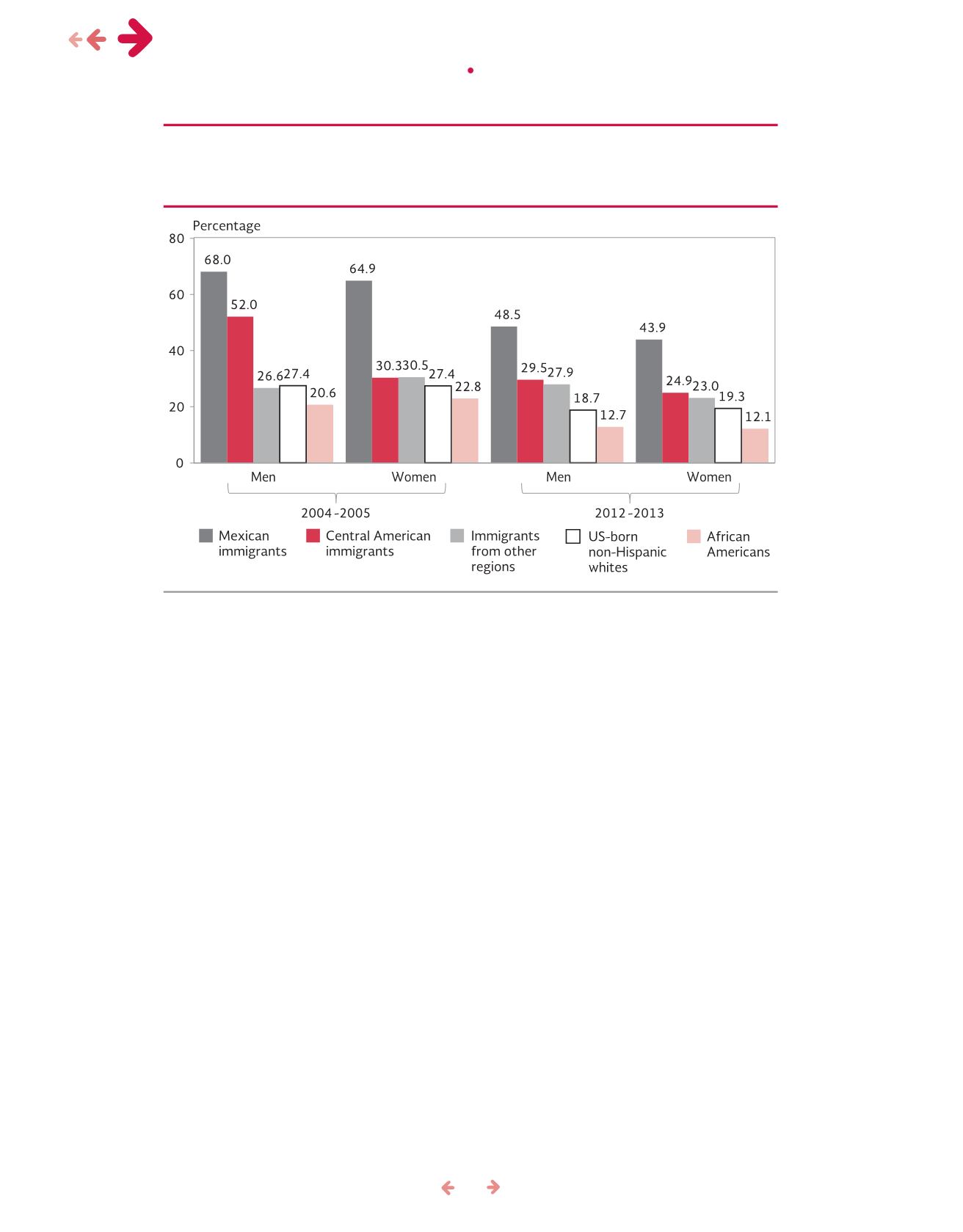
42
dren and adolescents across both genders in compari-
sonwith theirpeers fromothergroups, though thegap
has narrowed slightly (Figure 28). The most recent
data show that 44%ofMexican girls and adolescents
did not visit the doctor in the previous 12months, a
rate approximately 15 percentage points higher than
their counterparts fromCentral Americaandother re-
gions, twice that of non-Hispanic US-bornwhites and
over three times that ofAfricanAmericans.
Only sevenout of tenMexicanadultswho
report their healthas poor visit thedoctor
The regularity with which the adult population uses
medical services is closely linked to their percep-
tion of their health status. Visits to the doctor are
more frequent when health problems are detected,
while they tend tobemore sporadicwhen theperson
perceives their health as good. In addition, economic,
cultural and institutional factors influence the regula-
rityof visits to the doctor.
In general, the vast majority of United States
residents ages 18 to64 perceive themselves as being
in excellent, very good, or good health (over eight out
of ten), and there are no significant differences across
the various population groups. However, data show
thatMexicanswhoperceive their healthas fair or poor
are less likely tovisit thedoctor in thepastyear (72%)
than other immigrant groups and, above all, less than
non-Hispanic US-born whites and African Americans
(90%and91%, respectively) (Figure29).
An analysis of doctor visits by gender shows
that women across all the groups in this situation
were more likely than men to visit a doctor in the
previous12months (Figure30). In the caseofMexi-
cans, the difference betweenmen and women is al-
most 20percentagepoints andhas grownwith time.
This indicates the importance of raising awareness
among men regarding the danger of not receiving
timely health care.
Source: Migration Policy Bureau, SEGOB, based on U.S. State Health Access Data Assistance Center,
National
Health Interview Survey
(NHIS), 2004-2005 and 2012-2013. Integrated Health Interview Series. Minneapolis:
UniversityofMinnesota.
Figure28. Populationbetween1and17years in theUnitedStates that didnot have
amedical check-up in theprevious12months, bygender, basedon regionor origin
andethnicityor race, 2004-2005and2012-2013
migration & health •
mexican immigrants in the us: a 10 year perspective


